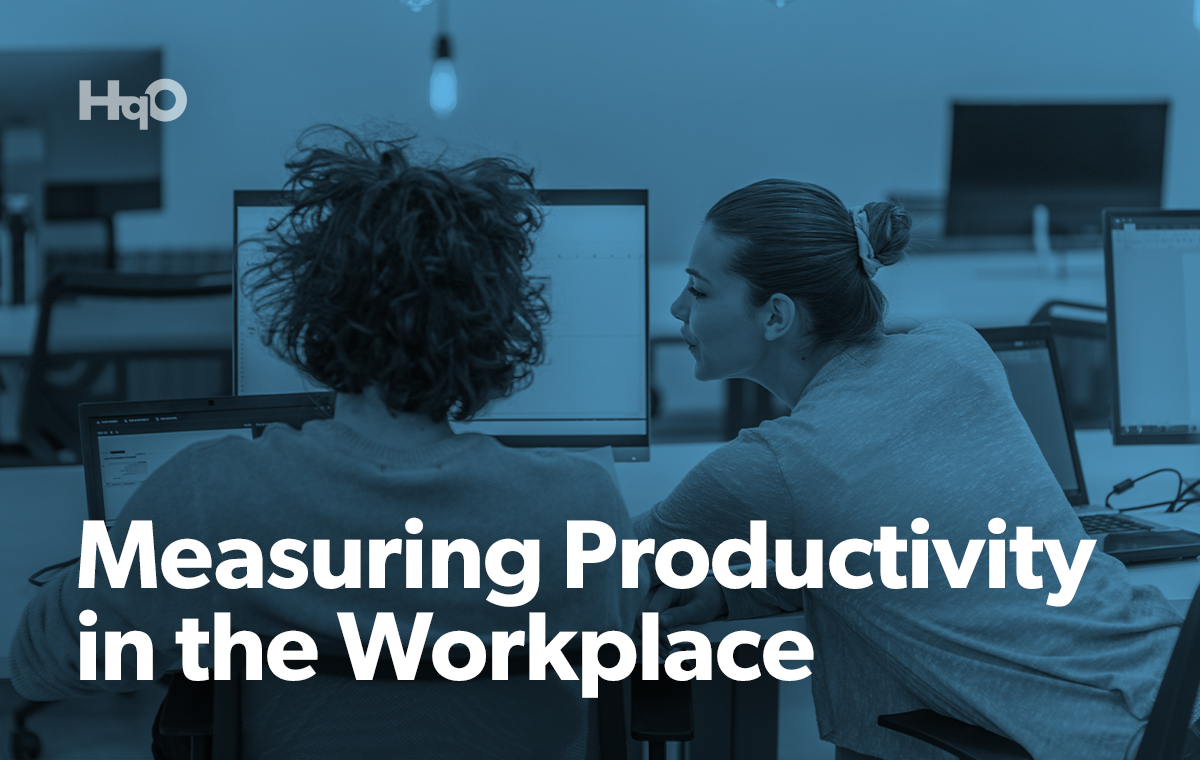In today’s day and age, employers need to define employee productivity through value — meaning that the more companies invest in their people and spaces, the more productive their business will be. That being said, how do you go about measuring this new approach to productivity? Can technology help?
The answer, in short, is yes. We can examine three popular criteria when measuring productivity by taking a look at how they can affect an organization and its workforce.
Efficiency
In a recent blog, Deloitte focused on productivity:
“Amid the pandemic, employers made significant investments in digital workplace tools to enable connection and collaboration, yet many of these platforms are not being used efficiently or to their fullest potential. Despite robust digital collaboration tools, there has not yet been a reduction in emails or meetings. This can impair productivity, as it has the effect of unnecessarily taking employees away from the tasks they actually have to perform.”
The right workplace experience platform, however, can provide ways through which employees can more efficiently plan their days and interact with their colleagues and offices — from wherever they’re working and from a single, easy-to-use mobile app interface.
Another blog, this one from HR management software company Bamboo HR, breaks down three focus areas that can boost efficiency — and with it, productivity:
- Time Management: Giving employees the autonomy and flexibility to work in the ways that best suit them.
- Collaboration: Providing employees with the tools (digital or otherwise) they need to connect and work alongside colleagues.
- Performance: Regular evaluation of and communication regarding employee performance.
Here, employers can leverage a workplace experience platform as an enabler by offering digital features such as easy room and desk reservations; efficient visitor management; workplace convenience services such as dry cleaning and retail; food ordering; communication tools; and other methods through which employees can make better use of their time.
Combined, these result in streamlined schedules that are free from unnecessary or confusing administration. This allows every employee to take control of their work day in a personalized manner and put forth their best results.
Performance
Employee performance is a direct indicator of overall productivity. When employees are able to do their best work, positive outcomes typically follow. A Gallup report, however, revealed that only 20% of employees feel their “performance is managed in a way that motivates them to do outstanding work.” On the other hand, those who did feel that their performance was managed well were 3.6 times more likely to be engaged.
“Performance is substantially affected by situational circumstances and human nature — what people need to be successful and how they uniquely experience performance. No matter how well managers define performance expectations, employees still need unwavering support from their manager and teammates to consistently perform at their best,” the report states. “Employees’ performance development needs change as their job demands, environment, teammates, manager and aspirations change.”
Autonomy, too, has an influence on performance. And in a hybrid work environment, an increased amount of autonomy is a given. However full, island-like autonomy isn’t a feasible long-term strategy. Instead, “companies such as Spotify, GitHub, and Google have publicized their policies allowing employees to self-select the projects and teams they work with, arguing that by spurring higher levels of ownership and creativity, this strategy leads to better, more innovative ideas.”
By providing a modern toolset for autonomy-led collaboration and communication, organizations can see teams that are “50% more likely to succeed than those with no autonomy, and 49% more likely to succeed than those with full autonomy.”
Outcome
Because trust is such an important factor in maintaining a productive environment, organizations are increasingly unwilling — if not outright unable, especially under hybrid working schedules — to closely monitor the minutiae of the employee work day.
Instead, organizations are turning to outcomes. The shift from output to outcome-based measurements of productivity are a result of both the pandemic and a modernized take on what it means to work.
“We don’t really worry about whether a person is spending eight to 10 to 12 hours. [Instead], we provide a measurable task with deadlines and enable a self-evaluating mechanism to measure performance. Then, the entire team is involved in the review, so we create a collaborative environment for enabling and measuring productivity,” Umesh NV, Managing Director of Otis Global Shared Service, said in a EY-hosted podcast episode entitled, Measuring Productivity in a Virtual Environment.
This isn’t to say that a laissez-faire approach to the workplace is encouraged; structure is necessary not to keep tabs on employee activity, but to ensure that processes are in place that enable employees to stay efficient, communicative, and productive. Employers also need structure while receiving the feedback they need to continue improving the workplace experience.
EY’s article, How Organizations Can Evolve Outdated Ideas of Human Productivity, reiterates this fact — and again refers to productivity through value.
“We need to recognize that humans create the most value – not when they are more ‘efficient’ like machines, but when they use their judgment, experience, collaborative skills and imagination to experiment, iterate and innovate. We cannot measure these powerful and uniquely human abilities in a linear way using the input-output machine notion of productivity.”
Want to learn more about how employee experience technology can enhance workplace productivity? Download our free guide, Productivity and the Workplace, today.



